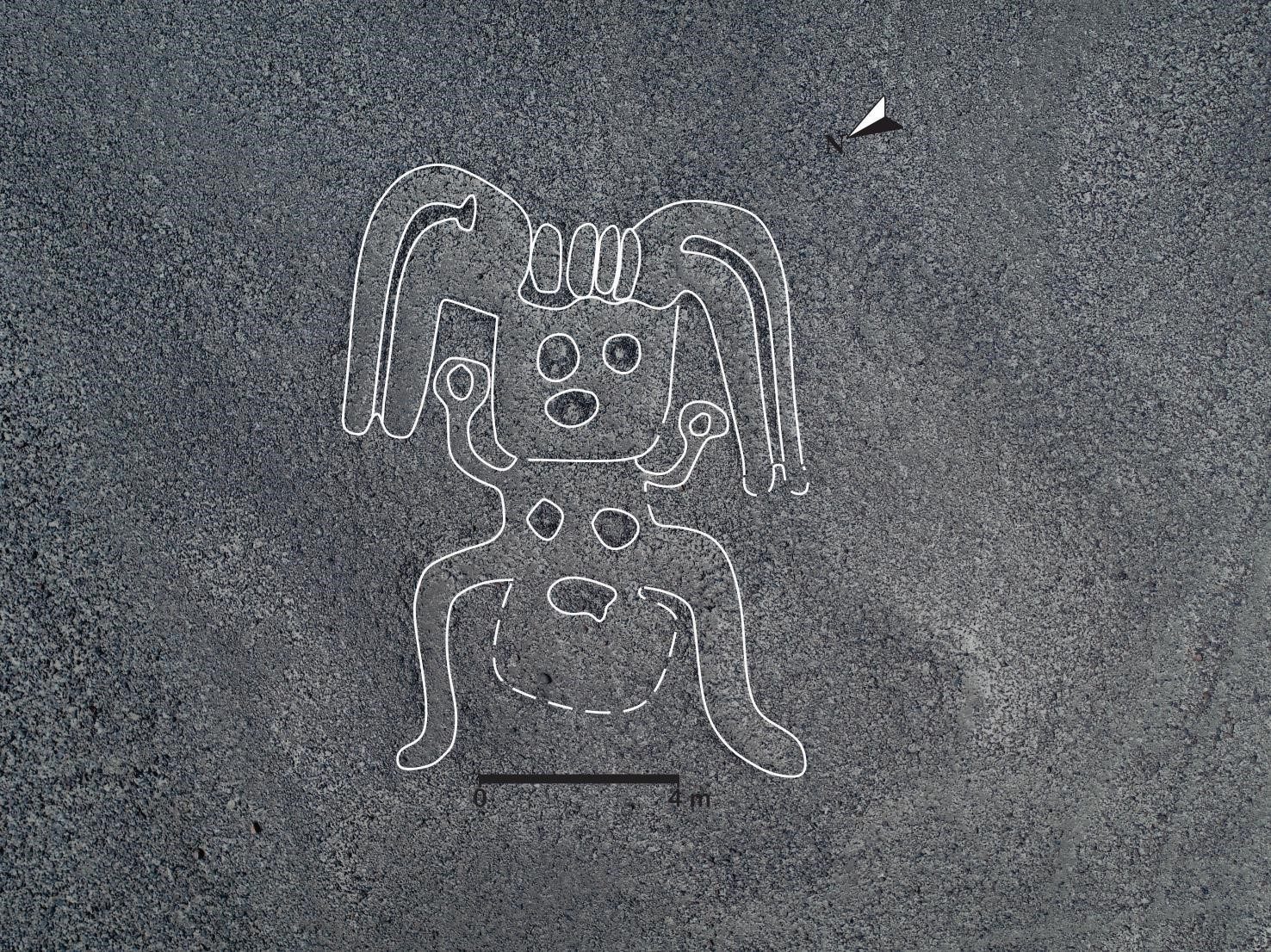While some ancient civilizations left behind written histories or crumbling temples, all that remains of Peru’s long-lost Nazca culture are the epic geoglyphs that adorn the desert landscape they once inhabited. Back in 1994, when these so-called Nazca Lines were given UESCO World Heritage status, only 30 of the giant etchings had been identified, yet archaeologists have just announced the discovery of a further 168 geoglyphs, bringing the current total to 358.
The newly identified artworks were spotted by researchers from Yamagata University between June 2019 and February 2020. Using drones and other aerial imaging techniques, the team revealed geoglyphs depicting humans, snakes, felines, killer whales, birds, and camelids, among other designs.
All of the images are attributed to the Nazca culture and are thought to have been created between 100 BCE and 300 CE, yet the local tradition of landscape carving is believed to have begun several centuries earlier. A number of previously identified geoglyphs – including a giant cat that was first spotted in 2020 – were actually created by the Paracas culture, which predates the Nazca civilization, who began engraving enormous figures into the landscape around 500 BCE.
The etchings were created by removing dark rocks and pebbles from the ground, revealing a white sandy layer beneath. Luckily for archaeologists, this sub-layer is rich in lime, which has rendered the geoglyphs weatherproof and protected them from erosion for two millennia.

This strange ‘humanoid’ figure with two faces was first spotted in 2018. Image credit: Yamagata University
Both the Paracas and Nazca cultures were prolific designers of these ancient drawings, some of which are up to 50 meters (165 feet) long and can only be seen in their entirety from the air. It’s thought that the glyphs were probably created either for the benefit of deities looking down from the heavens or for use in astronomical rituals.
Many of the smaller figures – which measure around 5 meters (16 feet) in length – are located along ancient trails, and may have served as landmarks or signposts for desert travelers. However, because so little is known about the lives of these ancient artists, archaeologists are still unsure exactly why they created their famous depictions.
Of the 168 recently-spied geoglyphs, all but five are relatively small and were found on these old walking paths. Among the figures identified was a human sporting a bob haircut and beard.
According to the researchers, more carvings are likely to be scattered across the desert waiting to be discovered. Archaeologists are therefore planning to scan the entire area in search of the remaining geoglyphs, using artificial intelligence to help identify faded figures lurking within aerial photographs.
Source Link: 168 New Nazca Geoglyphs Discovered In Peruvian Desert